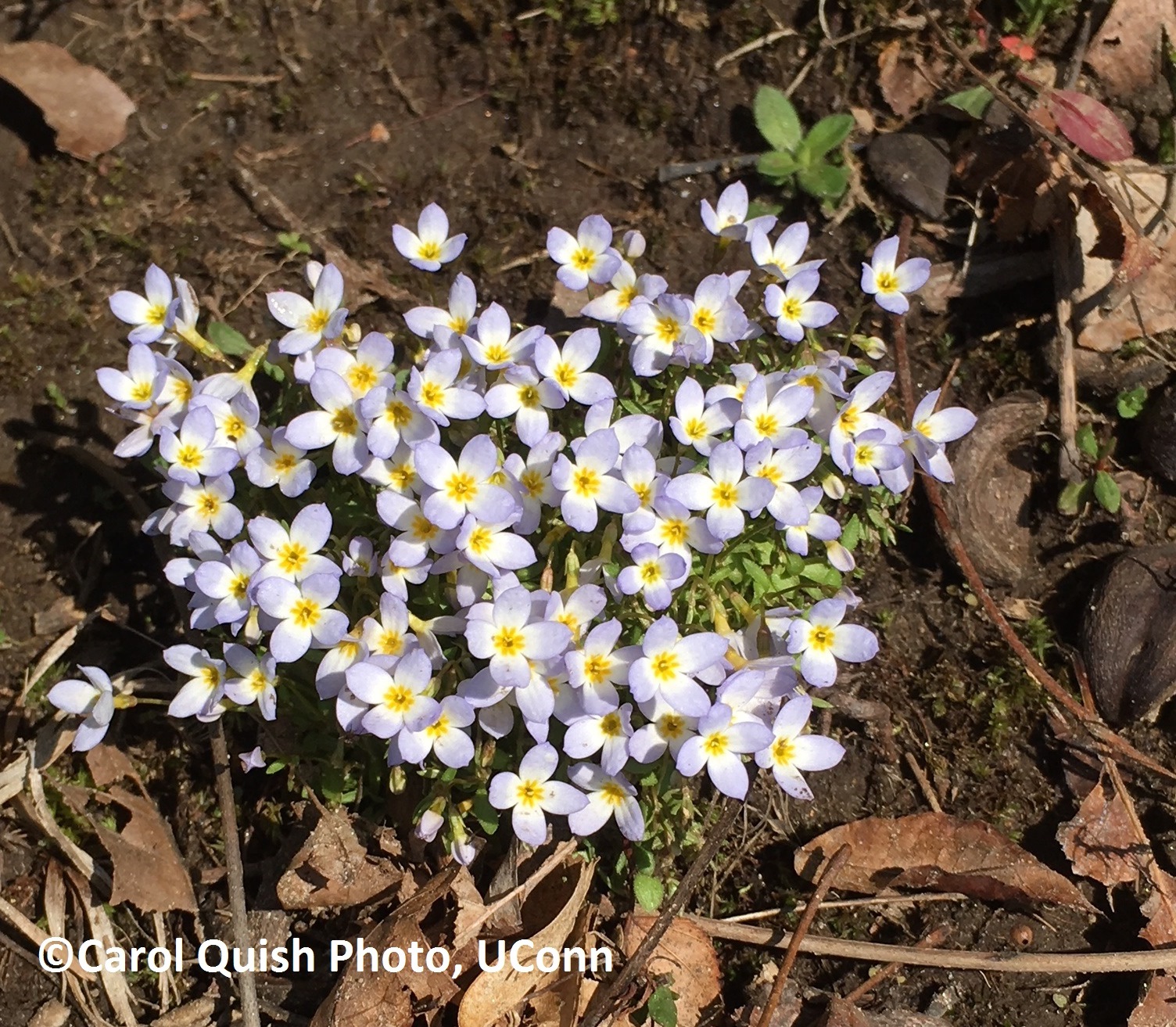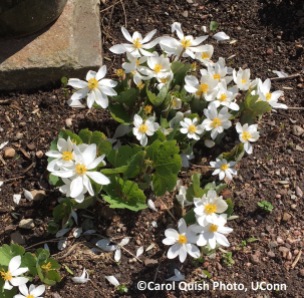Just as the addition of a colorful bow dresses up a gift, both mulch and perennial ground covers can add the finishing touch to garden beds. When used to cover bare soil, both mulch and living ground covers discourage weeds, control soil erosion, and stabilize soil temperature and moisture. The advantage of one over the other comes when considering that mulch must be reapplied regularly, and ground covers, once established, reproduce themselves and need only periodic attention to thin or control some that wander. Often, it’s the final vision the gardener has for the landscape that will determine which to use.
Ground cover types range from slow growers to ones that are true invasives. Slow growers include several varieties of shade tolerant phlox such as the creeping phlox (Phlox stolinifera), and the woodland phlox (Phlox divaricata). The moss phlox (Phlox subulata) enjoys sunny spots as does candytuft (Iberis sempervirens).

Moss phlox-bugwood.org photo

Candytuft photo by John Ruler University of Georgia Bugwood.org
If you are an impatient gardener, moderately speedy popular plants include sweet woodruff (Galium odoratum), spotted dead nettle (Lamium maculatum), wild ginger (Asarum canadense), and Chinese astilbe (Astilbe chinensis var. pumila). Each of these plants prefers shady areas for best growth, and they generally do well in moderately moist, fertile soil.
Other moderate creepers that do well in part-shade to sunny locations include bugleweed (Ajuga reptens), low growing sedum, such as Sedum rupestra, periwinkle/myrtle (Vinca minor), and creeping thyme (Thymus praecox). These plants prefer moderately moist soil except for the thyme, which prefers a somewhat dry soil.

Ajuga
This group of plants also includes the familiar pachysandra (Pachysandra terminalis). It grows by rhizomes that form stems that spread underground, producing roots that send up new plants. In ideal growing conditions it can be aggressive but can be controlled by removing the roaming underground rooted stems by hand. It grows in partial and full shade as well as partial sun, but full sun causes poor growth. It needs a moist, well-drained soil and does not tolerate drought.

Pachysandra under trees and shrubs
A group of plants that should be avoided in home gardens includes those that are very aggressive growers. One in this group, goutweed/bishop’s weed (Aegopodium podagraria), is on the Connecticut Invasive Plant List. It is said to need a mechanical barrier surrounding it to prevent it from wandering beyond its intended space.

Variegated goutweed
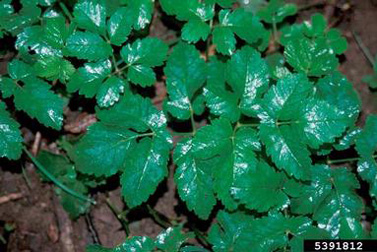
Goutweed- green leaves
A plant of similar aggressive habit, gooseneck loosestrife (Lysimachia clethroides), required hours of work to remove a mature patch – little volunteers are still popping up weeks later! While attractive when massed in open spaces, it is so aggressive that “Perennial Gardens” author Allan Armitage wrote that the right place for this plant “happens to be an island bed surrounded by concrete.” Two plants also bearing the loosestrife name, garden yellow loosestrife (Lysmachia vulgaris), and purple loosestrife (Lythrum salicaria,), are included on the Connecticut Invasive Plant List and cannot be sold in the state.
Sometimes mulch is the preferred ground cover. If a perennial bed has plants with attractive foliage or flowers that deserve attention, or where it would be hard to provide needed moisture, mulch can be a good option.

Natural cedar mulch
Mulch can be organic, from shredded tree products, straw, salt march hay, dried grass clippings, compost, or pine needles. To be effective at slowing weed growth, helping retain soil moisture and moderating soil temperature, organic mulch must be replaced regularly. However, it is not necessary to remove older mulch before adding a new layer. Often older mulch develops a crust-like surface so it should be loosened with a rake or other pronged tool so water will penetrate the surface. Some prefer using a color-treated mulch, which is not harmful to plants since the color comes from vegetable dyes.
Some problems that can come from using organic mulch include making the layer thicker than 3 inches, which prevents water and oxygen from penetrating the soil, and putting the mulch too close to the base of shrubs and trees, which encourages snails, slugs, burrowing animals and wood boring insects to settle in.
Inorganic mulch includes crushed stone, gravel, black plastic or landscape fabric. Depending on the choice of material, inorganic mulches have various advantages and disadvantages. Some allow water and oxygen to penetrate the barrier and keep weeds from breaking through. Some last for many years but some break down when exposed to sunlight and don’t allow water and oxygen to penetrate. Some are inexpensive, and others are expensive. Budget can be a deciding factor.
When it comes to choosing between use of a living ground cover or a type of mulch, the final decision depends on the reason for using the ground cover, how much energy the gardener has to maintain the ground cover and even what image the gardener wants to project for the garden beds. In the end, the choice should consider how the ground cover will benefit the plants that are growing in the garden.
Jean Laughman, UConn Home and Garden Education Center




















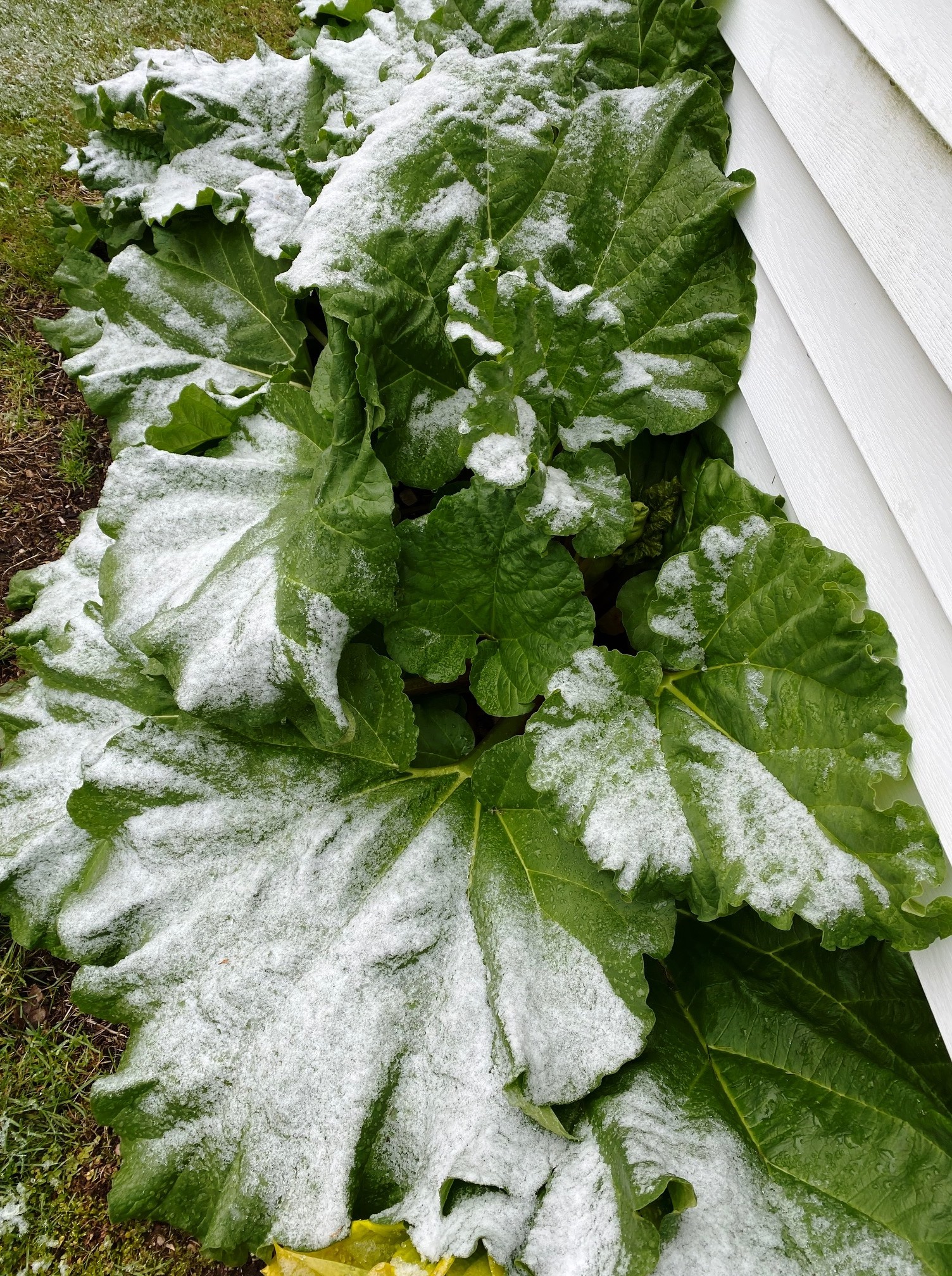 Earlier in the week, I removed a flowering stalk from the rhubarb plant, to conserve the plant’s energy by not producing seed. Removal of the flower helps the clump grow bigger and get stronger.
Earlier in the week, I removed a flowering stalk from the rhubarb plant, to conserve the plant’s energy by not producing seed. Removal of the flower helps the clump grow bigger and get stronger.




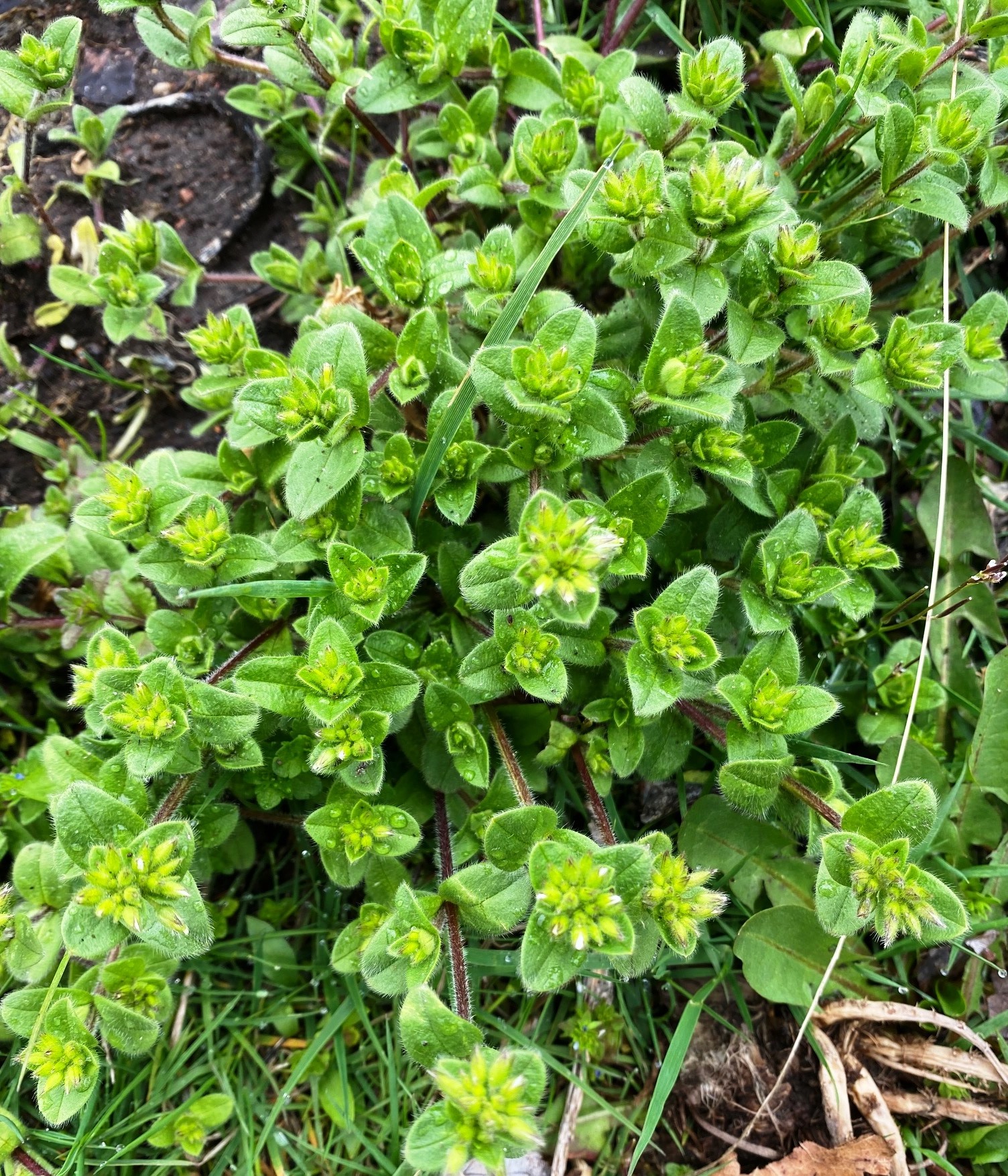























 Our son and his fiancée returned to Connecticut this year and they have embraced all things gardening and environmentally friendly, including composting. They even have an in-ground dog waste composter as they have two adorable fur-babies who provide plenty of material for it. It’s basically a septic system for dog waste. Dog waste shouldn’t go into a home compost pile that is used in a vegetable garden as it doesn’t get hot enough to destroy the harmful pathogens that may be present. Additional info on composting do’s and don’ts can be found at the UConn Soil and Nutrient Laboratory’s
Our son and his fiancée returned to Connecticut this year and they have embraced all things gardening and environmentally friendly, including composting. They even have an in-ground dog waste composter as they have two adorable fur-babies who provide plenty of material for it. It’s basically a septic system for dog waste. Dog waste shouldn’t go into a home compost pile that is used in a vegetable garden as it doesn’t get hot enough to destroy the harmful pathogens that may be present. Additional info on composting do’s and don’ts can be found at the UConn Soil and Nutrient Laboratory’s 















